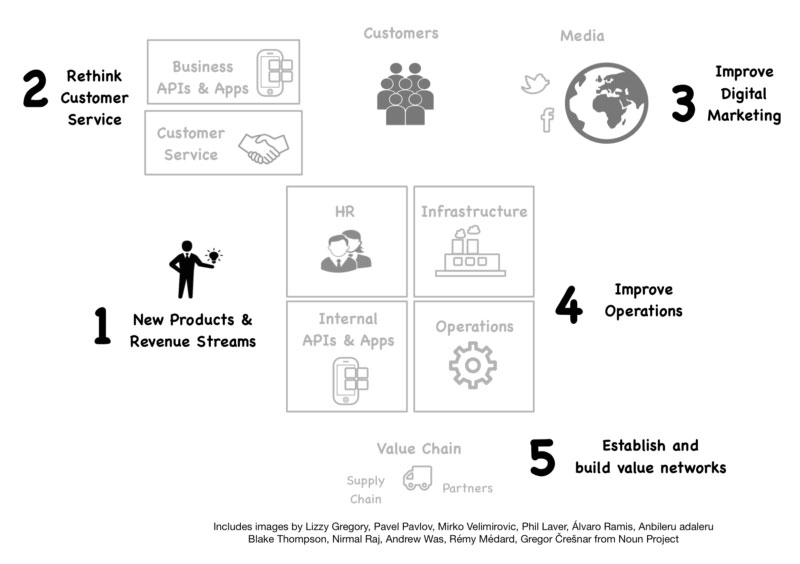Tuesday Dec 02, 2025
Tuesday Dec 02, 2025
Wednesday, 21 June 2017 00:00 - - {{hitsCtrl.values.hits}}
 Every organisation aspires to be a ‘digital business’ even though some might not be absolutely clear as to how they can do this. The inspiration no doubt stems from a few organisations that have redefined how they do business with the use of technology. For instance, Uber built a taxi company without owning any vehicles and Airbnb created a hospitality business without owning any hotels or rooms. The path they’ve followed to do so is their digital transformation journey. And as with traditional business strategies, digital transformation doesn’t just begin and end, but rather evolves and is refined and improved over time.
Every organisation aspires to be a ‘digital business’ even though some might not be absolutely clear as to how they can do this. The inspiration no doubt stems from a few organisations that have redefined how they do business with the use of technology. For instance, Uber built a taxi company without owning any vehicles and Airbnb created a hospitality business without owning any hotels or rooms. The path they’ve followed to do so is their digital transformation journey. And as with traditional business strategies, digital transformation doesn’t just begin and end, but rather evolves and is refined and improved over time.
While the pace to pick up to become digitally transformed has been relatively slower for Sri Lankan companies, there’s great potential in doing so and some are already seeing the benefits. For example, most of your banking requirements today can be done via a mobile device compared with say five years ago, and banks that don’t offer this service may lose customers to competitors who do. Yet, most organisations are still scratching the surface of what can be done to enhance internal operations as well as customer experiences. To this end, analytics play a significant role. There are different classes of digital technologies that play a part in this transformation: analytics and AI, social and mobile, and crowdsourcing. This column explores the role of analytics (and AI) in a digitally transformed business.
A typical digital business would have the key components illustrated in the diagram above; each of these components can be enhanced with the use of analytics, such as adding new products and revenue streams, rethinking customer service, improving digital marketing, improving operations, and establishing and building value networks.
Let’s take a deeper look at what these mean to a business:
An organisation has many inefficiencies, which if addressed, can save time and money. To do this, an organisation can collect data with regard to functional areas and then use the insights from these to bridge the gaps. The key to optimising is knowing what to measure. There are several sample use cases that fall under this section:
Analytics can be leveraged to optimise your organisation’s interactions with customers and create new dynamics. Here are some examples of how this can happen:

Analytics can identify and track leads as they move through the marketing and sales pipelines. Here are some typical examples:
The potential opportunities for this are limitless in any business or industry you operate in and analytics can give you the muscle you need to be innovative and creative when expanding your business. Some examples are as follows:
With analytics you can create an effective value network that connects your organisation, customers, supply chain, and distribution chain. This in turn helps to build and share intelligence within your network and enjoy benefits, e.g. American retailer Walmart provides detailed analytics about their products to suppliers, which enables them improve products. Moreover, there may be other products that sell together with your products like diapers and wet wipes or pizza crust and cheese.
While it’s easier said than done, these use cases demonstrate how analytics can significantly transform your businesses and enable you to compete more efficiently. Until now, technology has just amused us, yet the possibilities are endless. And the time to start your digital transformation journey is now.
(The writer is Vice President of Research, WSO2. In his current role, he oversees the overall WSO2 platform architecture. He specialises in web services and distributed systems, specifically working with aspects of data, scale and performance. He also serves as a research scientist at the Lanka Software Foundation, and he teaches as a visiting faculty member at the Department of Computer Science and Engineering, University of Moratuwa.)